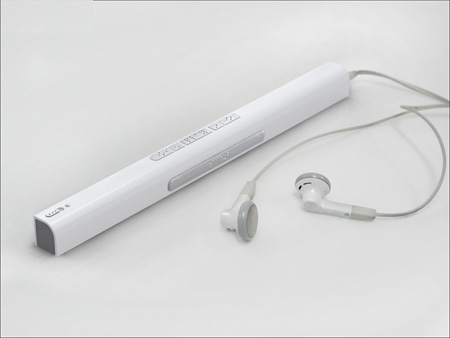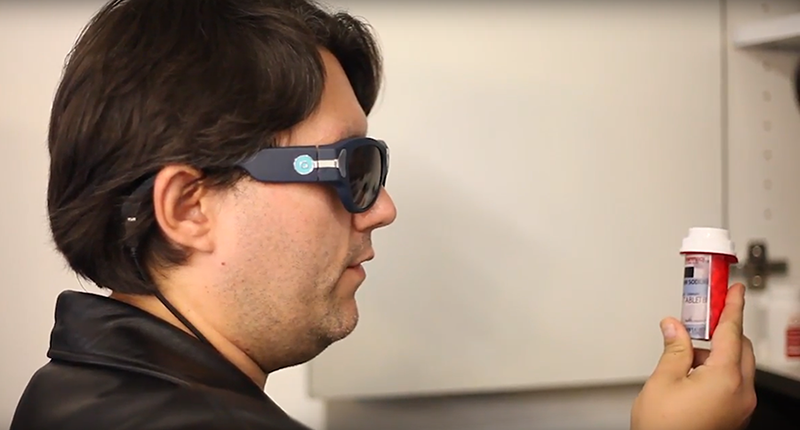Speech-to-Text Devices for Low Vision: Bridging the Communication Gap
Speech-to-Text Devices for Low Vision: Bridging the Communication Gap
Blog Article
Empowering Self-reliance With Assistive Innovation for the Blind
The assimilation of assistive innovation into the lives of people with visual impairments represents a significant development in advertising independence and self-sufficiency. From cutting-edge display viewers to innovative smart walking canes, these devices not just improve everyday navigating and interaction yet likewise equip customers to involve meaningfully in various aspects of life. As we explore the myriad benefits and real-world applications of these technologies, it ends up being crucial to analyze the underlying aspects that add to their performance and the possibility for future advancements in this vital area.
Summary of Assistive Innovation

The growth of assistive modern technology is based in concepts of inclusivity and empowerment. Innovations in software application, equipment, and sensory improvements provide customers with options customized to their specific needs. From screen visitors that convert message to speech, to responsive devices that convey information with touch, these tools change the method individuals engage with their environments.
In addition to sensible applications, assistive technology fosters better social incorporation and participation in numerous industries, consisting of education and learning and employment (Screen readers for the blind). As r & d remain to advance, the possibility for assistive modern technology to additionally boost the lives of aesthetically damaged people remains encouraging, paving the means for a much more fair culture where everyone can grow
Sorts Of Assistive Devices
A variety of assistive gadgets have arised to sustain individuals with aesthetic impairments, each developed to meet specific needs and improve daily functioning. These devices range from low-tech remedies to modern technologies, giving varied alternatives for individuals.
Low-tech gadgets include magnifiers and large-print materials that help in analysis and writing. Braille devices, such as Braille slates and styluses, make it possible for tactile reading and communication. Orientation and flexibility help, like white walking canes, assist individuals navigate their environment safely.
On the greater end of the spectrum, digital magnification systems and screen visitors use substantial assistance. Digital magnifiers allow customers to expand message and images on screens, while screen viewers transform electronic web content into manufactured speech, facilitating access to information on computers and smart devices.
Smart device applications also play a crucial role, giving functions like message recognition and navigating help. Wearable modern technology, such as smart glasses furnished with enhanced fact, is becoming an encouraging tool to improve situational awareness.
Benefits of Assistive Innovation
The integration of assistive innovation substantially improves the lifestyle for people with aesthetic impairments. These modern technologies equip users by advertising independence, enabling them to navigate their atmospheres better and execute everyday jobs with greater convenience. Screen viewers and magnification software application permit people to gain access to digital details, fostering instructional and professional possibilities that might have previously been out of reach.
Additionally, assistive devices such as wise canes and GPS applications provide real-time navigation help, boosting movement and safety and security. This raised freedom not only enhances self-esteem however additionally urges social engagement, permitting individuals to get involved even more completely in their areas.
Assistive innovation also helps with communication, aiding customers attach with others via voice recognition and text-to-speech applications. This ability is essential for preserving partnerships and accessing vital info.
Additionally, the customization alternatives offered with lots of assistive technologies make certain that individuals can customize tools to their particular demands, even more improving functionality and efficiency. Overall, the benefits of assistive technology for individuals with visual problems are extensive, advertising a more inclusive culture where everyone can pursue their investigate this site goals and desires.
Instance Researches and Success Stories
Highlighting the transformative impact of assistive innovation, countless study show how people with aesthetic impairments have actually effectively incorporated these tools into their lives. One compelling instance involves a college trainee who used screen reading software to navigate on-line sources and scholastic materials properly. This modern technology not only facilitated her education and learning however also improved her self-confidence in taking part in discussions and team tasks.
An additional case study includes an expert that utilizes a mobile phone application created for navigating and item recognition. By using this app, he has restored freedom in both his individual and workplace, enabling him to commute separately and involve with colleagues better.
Additionally, a retired person shared her experience with braille e-readers, which enabled her to access a substantial variety of literary works and remain gotten in touch with her area through publication clubs.
These success tales emphasize the vital duty of assistive technology in cultivating self-reliance, enhancing lifestyle, and advertising social integration for people with visual disabilities (Screen readers for the blind). By embracing these ingenious tools, individuals can get rid of challenges and confiscate opportunities that add to their individual and expert fulfillment

Future Trends in Assistive Innovation
Innovation in assistive modern technology is positioned to redefine the landscape of assistance for individuals with visual disabilities. Arising trends highlight the assimilation of fabricated intelligence (AI) and device discovering, which enhance the capability of devices that help with navigation and details accessibility. For example, AI-driven applications are now efficient in analyzing visual data in real-time, making it possible for customers to engage with their setting much more separately.
In addition, the growth of wearable technology is advancing quickly. Smart glasses furnished with enhanced fact (AR) can give audio summaries of environments, changing how users connect with public spaces. These tools not only advertise freedom but likewise foster social incorporation.
Furthermore, the Internet of Points (IoT) is making homes smarter, permitting seamless connection in between daily devices and assistive gadgets. This connection equips users by making it possible for automatic feedbacks and voice-activated controls customized to individual needs.
Conclusion
In verdict, assistive modern technology plays a critical role in encouraging individuals with visual disabilities by improving their self-reliance and interaction with their environments. The diverse series of applications and gadgets offered not only facilitates navigating and communication yet also advertises social assimilation and opportunities for professional and personal development. As advancements proceed in this field, the possibility for boosting the lifestyle for those with aesthetic impairments will certainly increase, cultivating higher autonomy and view publisher site empowerment.

Report this page